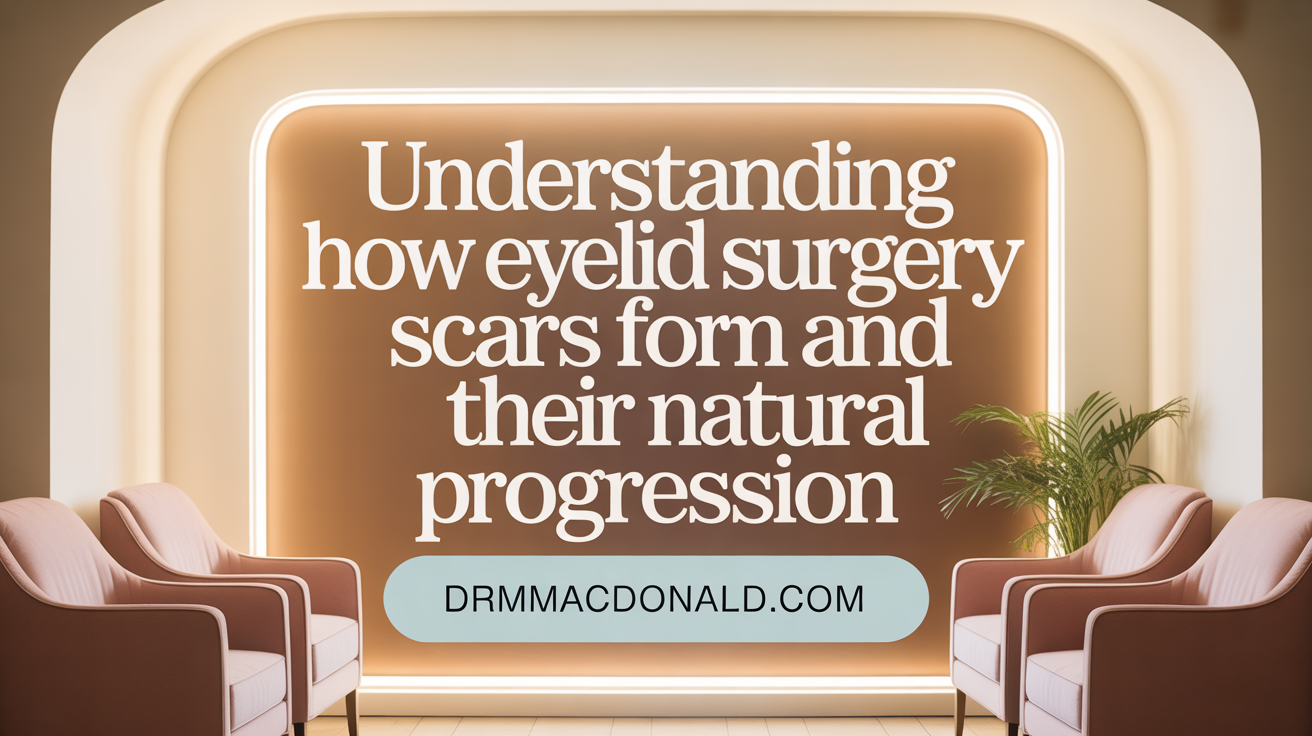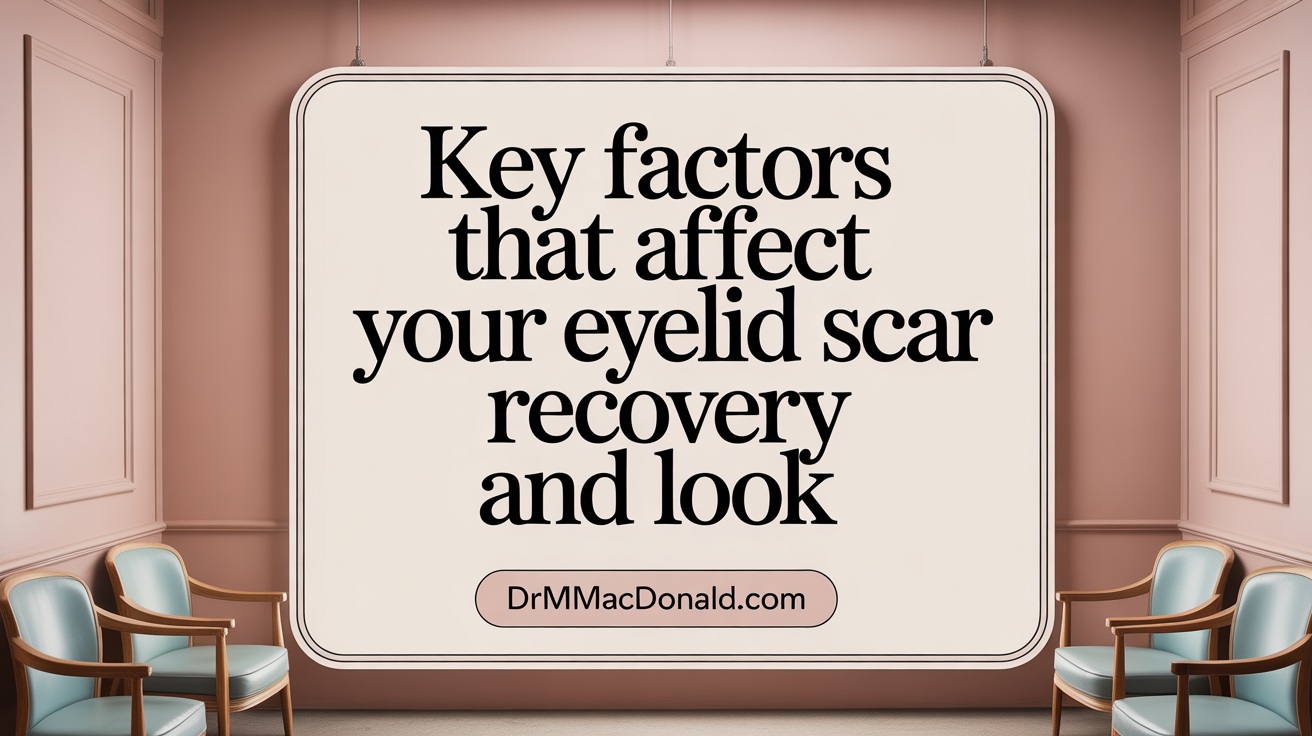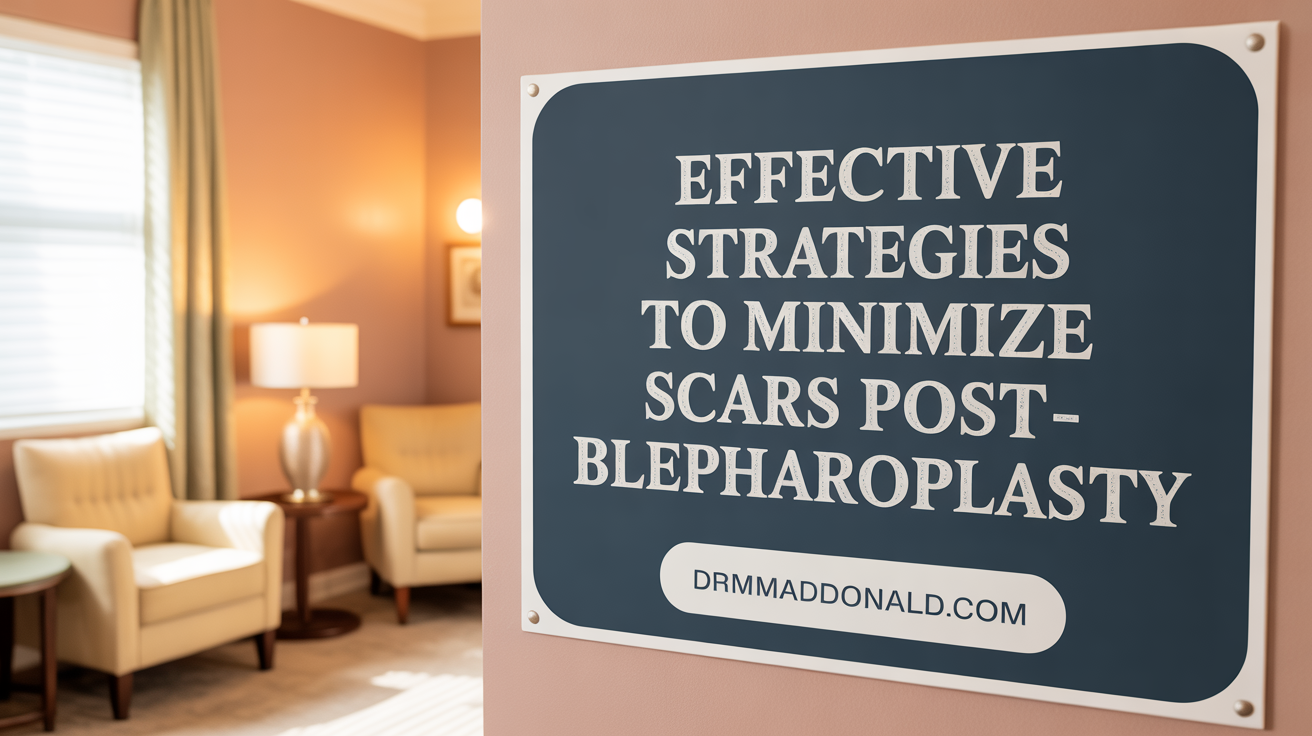Understanding Eyelid Surgery Scars
Eyelid surgery, or blepharoplasty, is a popular procedure aimed at rejuvenating the eye area by removing excess skin, fat, and muscle. While it offers transformative aesthetic benefits, a natural consequence is the formation of scars. These scars commonly appear along the natural eyelid creases, designed to be discreet but inevitably part of the healing process. This article explores the nature of eyelid surgery scars, their healing journey, prevention strategies, and effective treatment options to help patients achieve optimal outcomes while minimizing visible scarring.
The Formation and Nature of Eyelid Surgery Scars

How do eyelid surgery scars typically form and what is their nature?
Eyelid scars develop as a natural part of the healing process following blepharoplasty, a surgical procedure performed to remove excess skin, fat, and muscle from the eyelids. When the surgeon makes incisions, the body responds by initiating inflammation, which triggers tissue regeneration and collagen production. This collagen forms scar tissue as the wound heals.
Surgeons aim to place these incisions within the natural creases of the eyelids or just inside the lash line, which helps conceal the scars effectively. Initially, scars may appear as red, raised lines but tend to become less prominent over time.
The type and appearance of eyelid scars can vary. Some scars remain fine and barely noticeable, blending into the eyelid fold. However, in some cases, scars may become hypertrophic or form keloids, which are raised, red, and sometimes extend beyond the original wound site, especially in individuals prone to abnormal scarring.
The process of scar maturation typically lasts from six months to a year. During this period, scars gradually fade, soften, and blend with the surrounding skin. Factors influencing this healing include a person's age, skin type, genetic predisposition, surgical technique, and how well post-operative care guidelines are followed. Proper healing can result in scars that are subtle and well-hidden in the natural folds of the eyelid, significantly improving the aesthetic outcome of blepharoplasty.
Factors Influencing Scar Healing and Appearance

What factors influence the healing and appearance of scars after eyelid surgery?
The final look of scars following blepharoplasty is affected by several elements. One of the most significant is the individual's unique skin characteristics. Skin elasticity, tone, and genetics play crucial roles, as some people are predisposed to developing more noticeable scars or hypertrophic and keloid scars.
Surgical technique also greatly impacts scar quality. An experienced surgeon skillfully places incisions along natural eyelid creases, helping to conceal scars and minimizing trauma to surrounding tissues. Precise suturing and minimal tissue manipulation during surgery are essential factors.
Post-operative care is critical in influencing scar appearance. Proper wound hygiene, moisturizing, applying silicone gels or sheets, and protecting scars from sun exposure through sunscreen or protective apparel support optimal healing. Avoiding smoking and adhering to surgeon instructions help reduce complications and improve scar outcomes.
Genetics determine how quickly skin heals, the likelihood of abnormal scarring, and the final scar appearance. Some individuals' bodies tend to produce more collagen or have a higher risk of hypertrophic or keloid scars, making personalized care and, if necessary, targeted treatments important.
Age and skin type are also influential. Younger skin generally heals faster with less visible scars, while older skin may recover more slowly and form more prominent scars. Additionally, different skin types—especially darker skin tones—are more prone to hyperpigmentation or pigmentary changes after healing.
Overall, a combination of personal factors, surgical expertise, and diligent aftercare determines how scars develop and how well they fade over time. With proper management and realistic expectations, most patients experience significant improvement in scar appearance over several months to a year.
Additional insights at a glance
| Factor | Effect on Scar Healing | Additional Notes |
|---|---|---|
| Skin elasticity and tone | Better healing; less prominent scars | Prominent in older or less elastic skin |
| Genetic predisposition | Increased risk of hypertrophic or keloid scars | Family history may guide preventative measures |
| Surgical technique | Less visible scars with skilled placement | Emphasizes incision placement within natural creases |
| Post-operative care | Improved outcomes and minimized scarring | Includes moisturizing, sun protection, no smoking |
| Age | Younger heals faster; less visible scars | Older age may slow healing but still manageable |
| Skin type | Darker skin prone to pigmentation changes | Careful management can optimize results |
Being cognizant of these factors and actively managing them can greatly enhance healing and ensure scars are as discreet as possible.
Best Practices for Post-Operative Care to Promote Optimal Healing

What are the best practices for aftercare following eyelid surgery to promote optimal scar healing?
Proper postoperative care plays a vital role in ensuring that eyelid surgery scars heal well and become less noticeable over time. In the initial phase right after surgery, applying cold compresses frequently during the first 24 hours can significantly reduce swelling and bruising. Elevating the head while resting or sleeping, ideally for up to two weeks, helps decrease fluid retention around the eyelids and supports better healing.
Maintaining excellent incision hygiene is crucial. Gently cleaning the surgical sites with saline solution prevents infection and promotes cleanliness. Surgeons often prescribe ointments or creams to keep the area moisturized, which helps collagen production and scar maturation.
During the early recovery period, patients should avoid applying makeup, wearing contact lenses, or engaging in strenuous activities such as heavy lifting or vigorous exercise. These measures prevent stress on the healing incisions and reduce the risk of complications.
Protecting the delicate eyelid area from sun exposure is essential. Wearing sunglasses, hats, and applying broad-spectrum sunscreen on the eyelids can prevent pigmentation changes that make scars more prominent. Consistent follow-up visits with the surgeon allow for professional assessment of wound progress and timely intervention if needed.
By adhering to these practices—cold compress application, head elevation, gentle incision care, activity modifications, and sun protection—patients can greatly enhance their healing process and achieve a more aesthetically pleasing outcome.
Strategies and Techniques to Minimize Scarring After Blepharoplasty

What are effective strategies to minimize scarring after eyelid surgery?
Minimizing scars after blepharoplasty requires a combination of proper surgical planning and diligent post-operative care. First, choosing a highly experienced plastic surgeon skilled in eyelid procedures is essential. A surgeon’s expertise influences incision placement—ideally within natural eyelid creases—making scars less visible.
After surgery, following your surgeon’s specific care instructions supports optimal healing. This includes keeping incisions clean and moist, avoiding unnecessary facial movements, and protecting the area from sun exposure using sunscreen or protective clothing.
Incorporating silicone gels or sheets into your scar management routine can significantly soften and reduce the appearance of scars over time. These products, used consistently over weeks or months, help maintain hydration and promote favorable collagen formation.
Lifestyle adjustments play a crucial role. Avoiding smoking and alcohol enhances blood flow and oxygen delivery to tissues, promoting better wound healing. Maintaining proper hydration, a balanced diet rich in protein, and sufficient rest also support recovery.
Monitoring the healing process during follow-up appointments allows early detection of abnormal scarring such as hypertrophic or keloid scars. Early intervention with treatments like steroid injections or laser therapy can prevent these from becoming prominent.
By combining careful surgical technique, attentive post-operative care, lifestyle modifications, and professional treatment options, patients can achieve less conspicuous scars, often fading significantly within six months to a year.
Massage and Home Remedies for Scar Management
Should massage be used to help reduce the appearance of scars after blepharoplasty, and if so, when is it appropriate to start?
Gentle scar massage is effective in promoting better healing and minimizing visible scarring. It is generally recommended to start around two to three weeks after surgery, provided the surgeon has given clearance. At this stage, the initial wound healing is sufficiently advanced, allowing safe manipulation without risking disruption.
Performing massage stimulates collagen remodeling, which helps in softening and flattening the scar tissue. It also increases blood flow to the area, encouraging the removal of waste products and bringing in nutrients essential for healing.
To massage the scar, use clean fingertips to apply light circular motions over the incision and surrounding skin. This should be done gently to avoid irritation. Consistency is important—performing daily sessions can significantly improve the final appearance of your scars.
In addition to massage, some home remedies can aid scar healing. Silicone gels and sheets are popular choices because they help hydrate and seal the scar, supporting collagen balance. Natural options like aloe vera, vitamin E oil, and onion extract are also used by some patients to promote skin regeneration.
However, it is crucial to seek medical advice before using any topical remedies. An experienced surgeon can advise on the most appropriate timing and products for your specific case, ensuring safe and effective scar management without complications.
Medical and Advanced Treatments for Scar Reduction
What types of scar treatments and topical therapies are effective for managing eyelid surgery scars?
Managing scars after eyelid surgery, or blepharoplasty, involves a variety of medical and advanced treatments aimed at minimizing their visibility and improving skin texture. Topical solutions like silicone-based gels and sheets are commonly recommended to keep scars hydrated, reduce hypertrophic scarring, and diminish pigmentation. These products need consistent use over several weeks or months for optimal results.
In-office procedures provide more targeted interventions. Laser therapies, both ablative and non-ablative, are effective in flattening raised scars, reducing redness, and stimulating collagen growth. These treatments can significantly improve the appearance of scars with minimal downtime, but often require multiple sessions for best outcomes.
Corticosteroid injections are another potent option, especially for scars that are raised, red, or hypertrophic like keloids. These injections help relax scar tissue, decrease inflammation, and fade redness.
Surface treatments such as microneedling and chemical peels are used to improve skin irregularities, surface texture, and pigmentation issues. Microneedling stimulates collagen production through tiny skin punctures, resulting in smoother, firmer skin. Chemical peels remove damaged outer layers, revealing fresher, less pigmented skin underneath.
In cases where scars remain highly prominent or unsightly despite conservative treatments, surgical scar revision may be performed. This entails carefully excising the old scar, possibly using flap or graft techniques to create a new, less noticeable scar.
Often, a combination approach is employed, blending topical therapies, laser sessions, injections, and surgical revisions tailored by a qualified specialist. Such personalized strategies yield the most natural and cosmetically pleasing results, minimizing the psychological and emotional impact of visible eyelid scars.
More information
Search Query: advanced scar treatments for eyelid surgery
Through proper management, many patients achieve significant improvements, making scars less conspicuous and blending seamlessly with surrounding skin.
Psychological Impact and Scar Concealment Techniques
How do visible eyelid scars affect a patient's self-esteem and appearance?
Visible eyelid scars can significantly impact a person's confidence and emotional well-being. Patients often feel self-conscious, especially if scars are prominent or irregular in texture. This can lead to feelings of anxiety and even social withdrawal. However, many experience an emotional journey that begins with excitement about their surgical results, followed by concern over scar appearance during early healing stages. With time, as scars mature and fade, patients often develop greater acceptance. Effective scar treatments and proper healing can improve appearance, helping restore self-esteem.
Makeup plays a practical role in concealment. Using concealers, foundation, and color-correcting products can effectively camouflage scars once redness diminishes. Protective measures like sunscreen and sunglasses further help prevent discoloration, making scars less noticeable. Surgical techniques, such as placing incisions within natural eyelid creases or opting for transconjunctival approaches, are designed to hide scars effectively. These discreet methods ensure scars blend with natural skin folds, enhancing cosmetic outcomes.
Providing emotional support and setting realistic expectations are essential components of patient care. Understanding that scars tend to improve over time helps adjust patient outlooks. Encouraging patients to follow post-operative scar management routines and explore concealing makeup options can promote psychological well-being and confidence after eyelid surgery.
Optimizing Eyelid Surgery Scar Outcomes
Successfully navigating the journey of eyelid surgery scars involves understanding their formation, embracing proactive care, and utilizing effective treatments. With meticulous surgical technique and dedicated post-operative care—ranging from hygiene and sun protection to scar massage and silicone therapies—patients can significantly reduce scar visibility. Advanced options like laser treatments, steroid injections, and surgical revision provide further avenues for improvement if needed. Recognizing the emotional impact scars may have and employing concealment strategies support patient confidence and satisfaction. Ultimately, partnering with an experienced surgeon and following personalized care plans empowers patients to achieve smooth, discreet, and aesthetically pleasing results from their blepharoplasty procedures.
References
- Maximizing Scar Healing After Eyelid Surgery
- Eyelid Surgery Scar Treatment, Healing and Fading
- Complications of Blepharoplasty: Prevention and Management - PMC
- Scar Treatment 101: What are the first steps? | ASPS
- Eyelid Surgery Scar Treatment, Healing and Fading
- Blepharoplasty Scars: What to Expect and How to Manage Them
- Blepharoplasty - Mayo Clinic
- Blepharoplasty Scars - Guide 2025 - Perfect Eyes Ltd
- How to Reduce Scars after Blepharoplasty - Dr Jake Lim
- Blepharoplasty (Eyelid Surgery): What It Is, Details & Recovery
